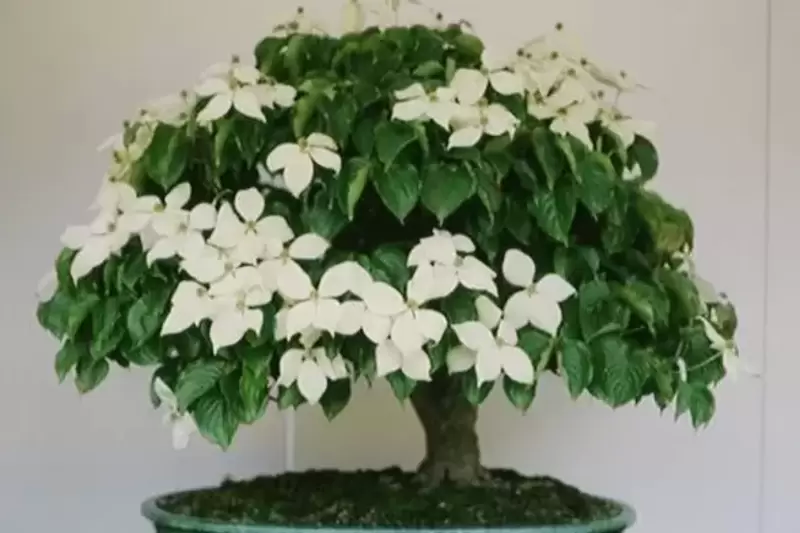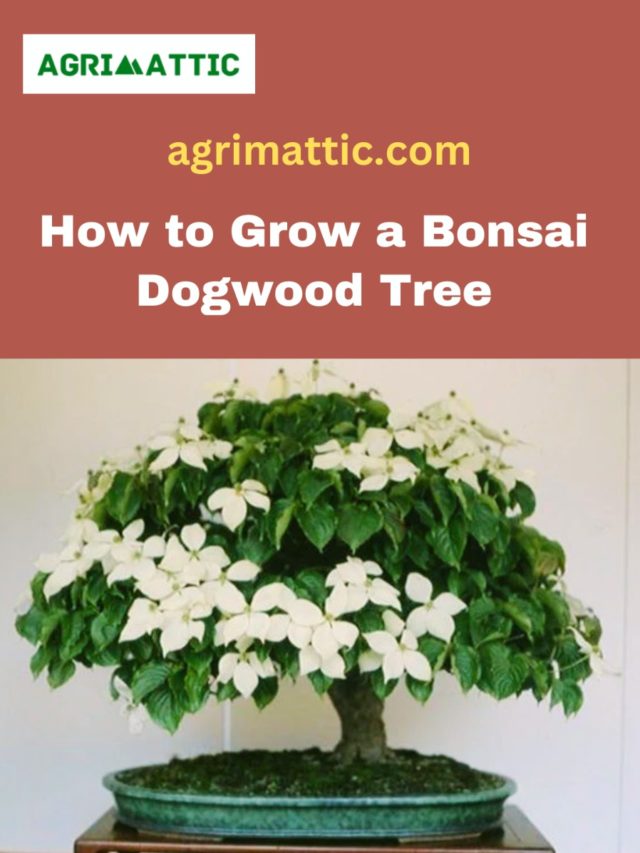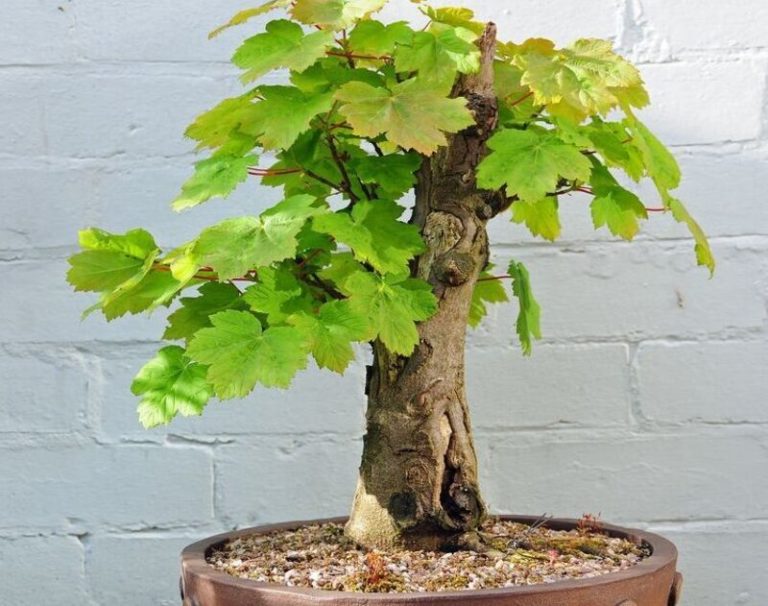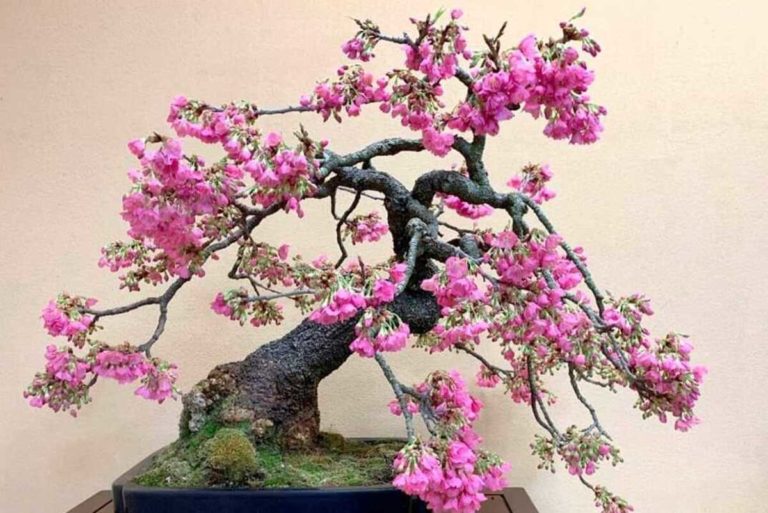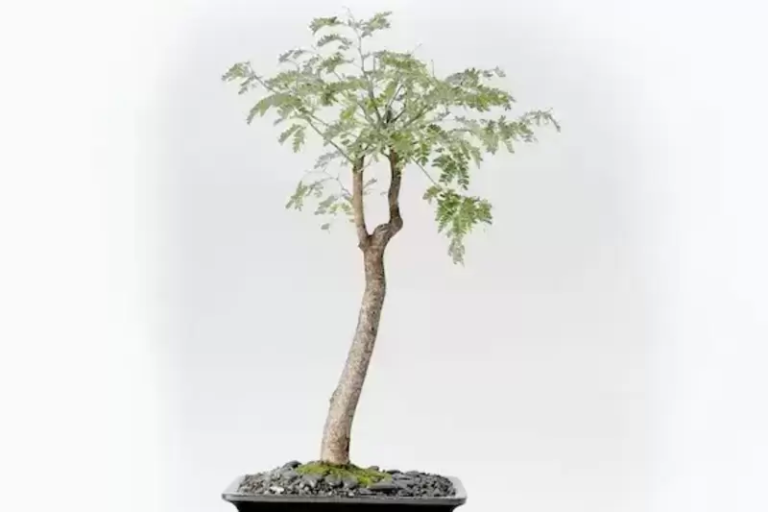Bonsai Dogwood Trees: A Harmonious Blend of Art and Horticulture
Bonsai trees are fascinating miniature versions of full-sized trees that bring a touch of nature into our homes. One particular species, the dogwood tree, has captured the hearts of many bonsai enthusiasts. In this article, we’ll explore the world of bonsai dogwood trees and learn how to care for these captivating creations.
What is a Bonsai Dogwood Tree?
A bonsai dogwood tree is a smaller version of the dogwood tree species that is carefully grown and taught to look like a full-sized tree. Dogwood trees are known for their pretty flowers and leaves, which makes them a popular choice for people who like to grow bonsai. Bonsai dogwood trees look and feel like their full-sized versions, and they can be styled and shaped in different ways to make unique designs. They need special care and upkeep to stay healthy and live for a long time. Overall, bonsai dogwood trees are beautiful tiny works of art that bring the beauty of nature into our homes.
History and Origins of the Bonsai Dogwood Trees
The background and roots of bonsai dogwood trees can be traced back to the art of bonsai, which started in ancient China over a thousand years ago. Growing and shaping tiny trees spread to Japan, where it became a big part of the society and grew into the polished art form we know today.
As for why dogwood trees are a part of the bonsai heritage, it is thought that the Japanese bonsai masters were inspired by the dogwood tree’s natural beauty and meaning. In Japanese society, the dogwood tree, which is called “yamazakura,” is a sign of cleanliness, grace, and the start of spring.
The dogwood tree species commonly used for bonsai include Cornus florida and Cornus kousa, which are native to North America and East Asia, respectively. These trees possess striking flowers and elegant foliage, making them ideal candidates for the art of bonsai.
Over the years, bonsai enthusiasts and practitioners worldwide have embraced the cultivation of bonsai dogwood trees, appreciating their unique beauty and the challenge they present in shaping and maintaining their miniature forms. Today, bonsai dogwood trees continue to enchant and captivate people with their delicate beauty, showcasing the harmonious blend of art and nature that bonsai represents.
Bonsai Dogwood Trees and Their Symbolism
Bonsai dogwood trees carry symbolism that is deeply rooted in both Eastern and Western cultures. Here are some symbolic meanings associated with bonsai dogwood trees:
- Purity: The dogwood tree, including its miniature bonsai form, is often associated with purity. In Japanese culture, the dogwood tree represents purity of heart and mind. Its pristine white or delicate pink blossoms symbolize innocence and the beauty of simplicity.
- Grace and Elegance: Bonsai dogwood trees exhibit graceful and elegant characteristics, reflected in their smooth branches, attractive foliage, and captivating flowers. These qualities embody the grace and refinement sought in the art of bonsai.
- Resilience: Dogwood trees are known for being strong and able to stand up to different weather situations. In the form of a bonsai, the tree represents strength and the ability to change and grow even in hard times. The bonsai dogwood tree has been shaped and trained over time to show how strong it is.
- New Beginnings and Renewal: Because it is one of the first trees to blossom throughout the spring season, the dogwood tree is generally connected with the entrance of spring. As a result, bonsai dogwood trees represent fresh beginnings, growth, and the renewal cycle. They remind us of nature’s continuous evolution and regeneration.
- Harmony with Nature: Bonsai dogwood trees are a great example of how people and nature can live together in harmony. Bonsai fans try to make small versions of real trees by carefully growing and shaping them. They want to capture the spirit and beauty of full-sized trees in a smaller size. The bonsai dogwood tree shows how close we are to nature and how much we appreciate its beauty and peace.
Overall, bonsai dogwood trees hold symbolic meanings that encompass purity, grace, resilience, new beginnings, and our harmonious bond with nature. These symbols add depth and significance to the art of bonsai, making the cultivation and care of bonsai dogwood trees a truly enriching experience.
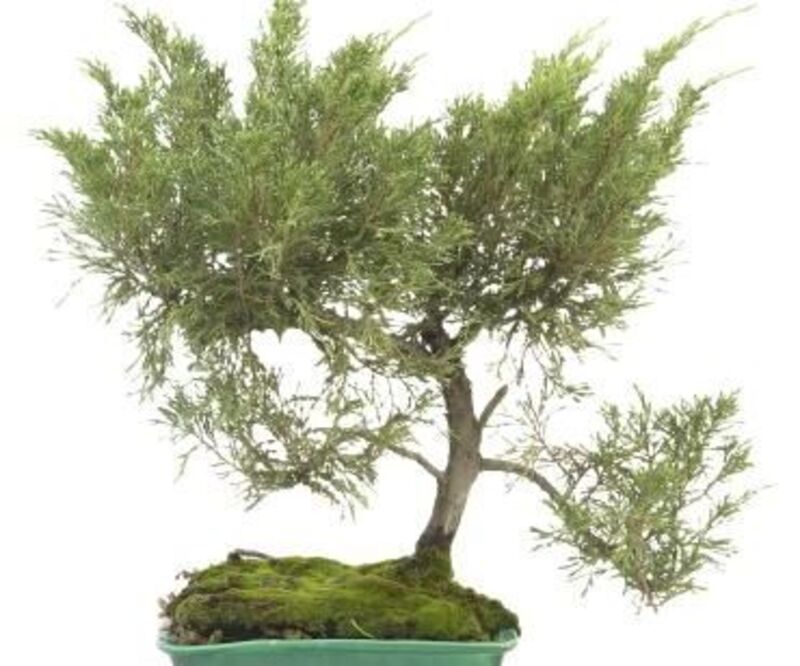
Characteristics of the Bonsai Dogwood Trees
Bonsai dogwood trees possess several unique characteristics that make them distinct and appealing. Here are some notable features of bonsai dogwood trees:
1. Delicate Blossoms: Dogwood trees are known for their beautiful flowers, and so is the bonsai dogwood. Depending on the type, the flowers may be white, pink, or a mix of the two. These tiny flowers add charm and beauty to the bonsai tree, making a stunning show.
2. Attractive Foliage: Bonsai dogwood trees have leaves that are lush and colorful. The leaves are usually oval, with clear lines and pretty green colors. As fall comes, the leaves of some types of dogwood change to red, orange, or purple, which makes the bonsai tree look even better.
3. Intriguing Bark Texture: The bark of dogwood trees often develops interesting textures and patterns over time. In the case of bonsai dogwood trees, the bark can take on a weathered appearance, featuring rugged and textured surfaces that contribute to the tree’s overall character and charm.
4. Compact Size: Bonsai dogwood trees are cultivated to remain small and compact, making them ideal for indoor or limited-space environments. Their miniature stature allows enthusiasts to bring the beauty of trees into their homes or gardens, even when space is limited.
5. Ability to Be Styled in Various Forms: Bonsai dogwood trees are highly versatile when it comes to styling. They can be shaped and trained in various traditional bonsai forms, such as formal upright, informal upright, slanting, or cascading. This flexibility allows bonsai enthusiasts to express their creativity and personal preferences in the design of their bonsai dogwood trees.
6. Symbolic Significance: As mentioned before, bonsai dogwood trees carry symbolic meaning, representing purity, grace, resilience, and the harmonious connection between humans and nature. These symbolic associations add depth and cultural significance to the bonsai dogwood tree, making it a meaningful and cherished art form.
Dogwood bonsai trees have delicate flowers, pretty leaves, interesting bark textures, a small size, and the ability to be shaped in different ways. Because of these things and what they stand for, bonsai dogwood trees are a fascinating and satisfying choice for people who like bonsai.
Types of Bonsai Dogwood Trees
There are several types of dogwood trees that are commonly used for bonsai cultivation. Here are some popular varieties of bonsai dogwood trees:
Cornus florida: Also known as the flowering dogwood, Cornus Florida is a native tree of eastern North America. It features stunning white, pink, or red blossoms in the spring, which make it a popular choice for bonsai enthusiasts. The foliage of Cornus Florida turns vibrant shades of red in the fall, adding to its visual appeal.
Cornus kousa: Native to East Asia, Cornus kousa is commonly referred to as the Japanese dogwood or Korean dogwood. This variety is highly valued for its large and showy white or pink bracts that surround the tiny flowers. The bracts often have distinct pointed tips, giving them an elegant appearance. Cornus kousa also produces attractive red berries in the fall.
Cornus canadensis: Also known as the bunchberry or Canadian dwarf cornel, Cornus canadensis is a low-growing dogwood species that is well-suited for groundcover or rock garden bonsai. It features small white flowers that give way to clusters of bright red berries. The foliage turns shades of red in the fall, providing added visual interest.
Cornus mas: The Cornus mas, also called the Cornelian cherry dogwood, is native to Europe and western Asia. This type of dogwood has small yellow flowers that bloom in groups in early spring. Its red fruit can be eaten and is often used to make jams and other sweets. In the fall, the leaves of Cornus mas turn different colors of yellow and red.
These are just a few examples of the kinds of dogwood trees that are often used to grow bonsai. Each type has its own unique qualities, such as the color of its flowers, the shape of its leaves, and how it grows. Bonsai fans can choose the type that fits with their tastes and design ideas. This makes it possible to have a collection of bonsai dogwood trees that are different and look good.
How to Grow a Bonsai Dogwood Tree
Growing a bonsai dogwood tree requires patience, attention to detail, and proper care. Here are the steps to help you grow a bonsai dogwood tree:
- Selecting a Healthy Tree: Start by getting a healthy dogwood sapling from a nursery or yard shop you can trust. Look for a young tree with a strong base, branches that are well-developed, and healthy leaves. Think about the type of dogwood tree you want to use for your bonsai.
- Potting and Soil: Choose a small pot with good drainage holes that will work for your bonsai. Use a bonsai soil mix that allows water to stay in the soil but also drains well. Some of the things that can go into the dirt mix are akadama, pumice, and lava rock. To keep the dirt from washing away, put a layer of fine mesh or screen over the drainage holes.
- Pruning and Shaping: Start cutting and shaping your dogwood bonsai tree to get it to the shape you want. Remove any dead or broken branches and cut away any extra growth to keep the tree’s size small. Make clean cuts at a 45-degree angle with bonsai trimming shears. Wiring can also be used to form and direct the branches into the right places.
- Watering: Your bonsai dogwood tree will only stay healthy if you water it the right way. When the top inch of dirt feels a little dry, give the tree a lot of water. Don’t drink too much or let the dirt get too wet, because that can cause root rot. Check the wetness levels often and change how often you water based on what the tree needs.
- Sunlight: Dogwood trees that are grown as bonsai do best in bright, indirect sunlight. Put your tree somewhere that it will get at least 4–6 hours of sunshine a day. If you keep your bonsai inside, put it near a south-facing window or add grow lights to make sure it gets enough light.
- Fertilization: Feed your bonsai dogwood tree with a balanced, slow-release bonsai fertilizer during the growing season. Follow the manufacturer’s instructions for the proper dosage and frequency. Fertilizing helps provide the necessary nutrients for healthy growth and vibrant foliage.
- Pest and Disease Control: Check your dogwood bonsai tree often for signs of pests or diseases. Aphids, scales, and worms are common pests that can hurt dogwood trees. If you find any problems, use insecticidal soaps or other organic methods to get rid of the pests. To stop illnesses from spreading, prune and remove any parts of the tree that are sick or affected.
- Repotting: Every two to three years, usually in early spring before the growing season starts, you should move your bonsai dogwood tree into a new pot. Repotting helps to freshen the soil, encourages healthy root growth, and gives you the chance to prune the roots properly. During repotting, cut back some of the root ball to keep the tree’s size and shape.
- Seasonal Considerations: Adjust your care routine based on the changing seasons. Protect your bonsai dogwood tree from frost during the winter by moving it to a sheltered location or insulating the pot. Provide protection from strong winds and excessive heat during the summer.
- Continual Maintenance: Keep your bonsai dogwood tree in good shape by trimming, wiring, and shaping it as needed. Keep an eye on its general health, water and feed it as needed, and enjoy the beauty of what you’ve made.
Growing a dogwood bonsai tree is a fun and ongoing process. With the right care and attention, your bonsai dogwood tree will grow and change over time, which will be fun to watch.
Benefits of Bonsai Dogwood Trees
Bonsai dogwood trees offer several benefits that make them a worthwhile choice for bonsai enthusiasts. Here are some of the advantages of cultivating bonsai dogwood trees:
1. Aesthetic Beauty: Bonsai dogwood trees are small versions of real dogwood trees that show off their natural beauty. Their tiny flowers, pretty leaves, and interesting bark textures make them beautiful and interesting to look at. These small trees bring the beauty and grace of nature into your home or yard.
2. Stress Relief and Relaxation: The art of bonsai, like taking care of a bonsai dogwood tree, can be relaxing and healing. Taking care of a live plant and watching it grow can help lower stress, increase awareness, and make you feel calm and peaceful.
3. Connection with Nature: Bonsai dogwood trees give you a real link to nature, even if you live in a city or a place with limited room. By taking care of a bonsai tree, you can feel the beauty and calm of trees and their natural parts, which can help you appreciate the natural world more.
4. Creative Expression: Growing and shaping a bonsai dogwood tree is a creative way to show your artistic side. Bonsai fans can try out different styles, shapes, and techniques to make patterns that are unique and personal. The process of sculpting and teaching the tree gives people a way to express themselves and a chance to make live works of art.
5. Learning and Patience: Growing a bonsai dogwood tree takes time, patience, and knowledge of horticultural concepts. It teaches tree care, cultivation techniques, and the careful balance of root, branch, and leaf development. Bonsai cultivation fosters a sense of success and personal progress by encouraging ongoing learning and skill development.
6. Bonsai Community and Sharing: Through a shared passion and admiration of the art form, bonsai dogwood trees may bring people together. Bonsai enthusiasts sometimes join local clubs or attend exhibits and workshops to learn from one another, exchange ideas, and share their enthusiasm for bonsai. The bonsai community provides possibilities for socialization, education, and fellowship.
7. Cultural and Symbolic Significance: Bonsai, including dogwood trees grown in pots, has cultural and spiritual meaning. It comes from old Eastern beliefs and practices that stress harmony, balance, and the link between people and nature. Bonsai dogwood trees stand for things like purity, beauty, and strength, which give the art form more depth and meaning.
Aesthetic beauty, stress reduction, a connection with nature, creative expression, learning opportunities, community participation, and cultural and symbolic importance are all benefits of growing a bonsai dogwood tree. Because of these advantages, bonsai dogwood plants are a satisfying and enjoyable quest for bonsai aficionados of all levels of skill.
Displaying and Showcasing the Bonsai Dogwood Trees
Displaying and showcasing your bonsai dogwood tree is an essential part of appreciating its beauty and sharing it with others. Here are some tips for effectively displaying and showcasing your bonsai dogwood tree:
Choice of Display Stand: Select a suitable display stand or table that complements the aesthetic of your bonsai dogwood tree. The stand should be sturdy, appropriately sized, and made of materials such as wood or stone that enhance the overall presentation. Ensure that the stand does not distract from the tree itself and allows for easy viewing from different angles.
Positioning: Put your dogwood bonsai tree somewhere where people can see it and enjoy it. Choose a place that gets a good amount of natural light and has enough shade. Keep the tree away from sudden changes in temperature, drafts, and strong winds, all of which can hurt its health.
Display Accents: You can make your bonsai dogwood tree look better by adding things that go well with it. Consider adding rocks, moss, or small models to make a setting that looks natural and goes well with its surroundings. These details shouldn’t take away from the beauty of the tree, but rather add to it.
Rotation: Make sure to turn your bonsai dogwood tree on its display stand often so that it grows evenly and so that you can see it from all angles. By turning the tree, you keep it from growing toward one light source and help it grow evenly.
Group Displays: Think about putting your bonsai dogwood tree with other bonsai trees in a show to make an artistic piece. Group displays can show off different types, sizes, and kinds of bonsai, making for a beautiful and balanced setup. Make sure that the trees in the group look good together and have similar needs for care.
Exhibitions and Shows: Participate in bonsai shows and exhibits to expose more people to your dogwood bonsai tree. These events allow you to share your interests, learn from other enthusiasts, and receive feedback on the appearance of your Christmas tree. Before displaying your bonsai tree, ensure that it is well-kept, free of pests and diseases, and arranged attractively.
Photography: Take pictures of your dogwood bonsai tree to show how beautiful it is. Use natural light or the right kind of artificial light to show off the tree’s traits and get a sense of its character. Try looking at it from different views to find the best way to show what makes it special. You can share your photos online or in print to inspire and teach other people who like bonsai.
Remember, the display and showcasing of your bonsai dogwood tree should emphasize its natural beauty, evoke a sense of harmony, and allow viewers to appreciate its intricate details. With thoughtful presentation and care, you can create a captivating display that showcases the artistry and craftsmanship of your bonsai dogwood tree.
Styling and Design of a Bonsai Dogwood Tree
The styling and design of a bonsai dogwood tree involve shaping and training the tree to achieve the desired form and aesthetic appeal. Here are some considerations and techniques for styling and designing your bonsai dogwood tree:
- Research and Planning: Before you begin styling your bonsai dogwood tree, gather information about the natural growth habits and characteristics of dogwood trees. Understand the specific variety of dogwood you are working with to determine the most suitable bonsai style that complements its inherent traits.
- Bonsai Styles: There are various bonsai styles to choose from, each with its own unique characteristics and requirements. Some common styles for bonsai dogwood trees include:
- Formal Upright (Chokkan): This style features a straight and upright trunk with evenly spaced branches that gradually decrease in size as they ascend the tree. It represents strength and stability.
- Informal Upright (Moyogi): This style portrays a more natural and informal appearance, with a curved trunk and branches that exhibit gentle movement and asymmetry.
- Slanting (Shakan): In this style, the trunk of the bonsai dogwood tree slants at an angle, adding a sense of dynamic movement and energy.
- Cascading (Kengai): Cascading bonsai trees have a trunk that curves downward, resembling a tree growing on a steep cliff or over a waterfall. This style conveys a sense of drama and elegance.
- Windswept (Fukinagashi): This style depicts a tree that appears to have been shaped by strong winds, with the branches and foliage all leaning in one direction.
Choose a style that complements the characteristics of your bonsai dogwood tree and aligns with your personal preferences.
Pruning and Wiring: Pruning is an essential technique in bonsai styling. Use sharp bonsai pruning shears to selectively remove branches and foliage to create the desired shape and structure. Prune back long or unwanted branches to maintain the compact size of the tree. Wiring is another technique used to shape and position branches. Wrap bonsai wire around the branches, gently bending them into the desired position. Be careful not to apply excessive pressure that could damage or break the branches.
Branch Development: Encourage the development of secondary and tertiary branches by selectively pruning the tree. This promotes ramification, which refers to the division of branches into smaller and more refined structures. It creates a fuller and more mature appearance in your bonsai dogwood tree.
Patience and Balance: Styling a bonsai dogwood tree is a gradual and ongoing process that requires patience. Allow the tree to grow and recover after pruning or wiring before further shaping. Aim for a balanced distribution of branches and foliage throughout the tree, avoiding overcrowding or imbalances in branch placement.
Natural Features and Nebari: Preserve and enhance the natural features of your bonsai dogwood tree. Accentuate interesting bark textures, such as peeling or rough bark, by gently cleaning and brushing the trunk. Nebari refers to the visible surface roots of the bonsai tree. Ensure that the nebari is well-developed and evenly spread, as it contributes to the overall visual appeal and stability of the tree.
Continual Maintenance: Regularly maintain and refine the styling of your bonsai dogwood tree through pruning, wiring, and selective trimming. Monitor the growth patterns and adjust the design as necessary to maintain the desired aesthetic and balance.
Remember that styling a bonsai dogwood tree is an art that takes imagination, observation, and a deep understanding of the tree’s natural traits. Take your time, enjoy the process, and let the tree lead you as you form and design it into a unique and captivating bonsai creation.
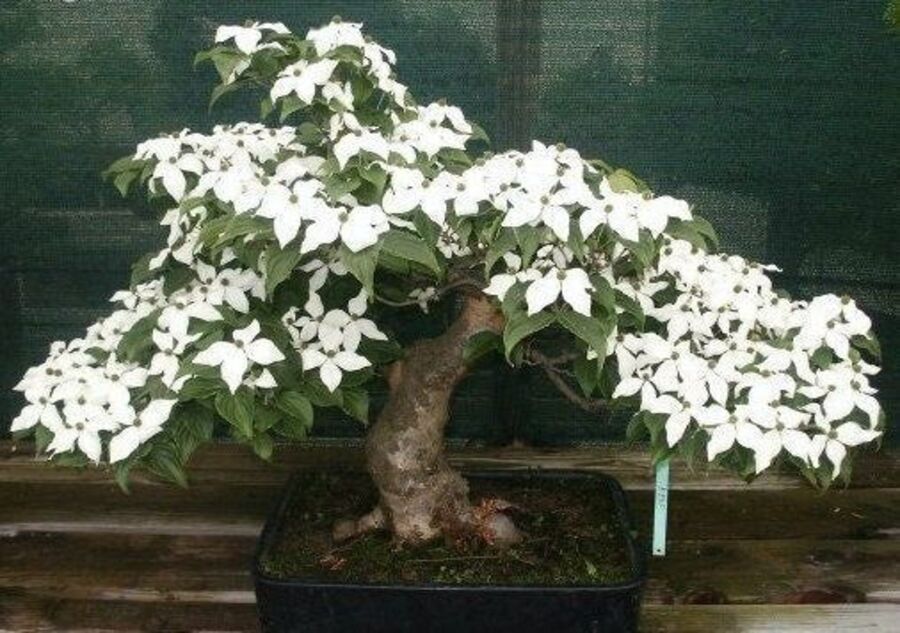
How to Care for and Maintain a Bonsai Dogwood Tree
Caring for and maintaining a bonsai dogwood tree is essential to ensuring its health, vitality, and longevity. Here are some key aspects to consider when caring for your bonsai dogwood tree:
- Watering: Proper watering is crucial for the health of your bonsai dogwood tree. Water the tree thoroughly when the top inch of soil feels slightly dry. Avoid overwatering or letting the soil become waterlogged, as it can lead to root rot. Use a watering can or a gentle spray nozzle to water the tree evenly, allowing the water to soak into the soil.
- Sunlight: Bonsai dogwood trees thrive in bright, indirect sunlight. Place your tree in a location where it receives at least 4-6 hours of sunlight per day. If you are keeping your bonsai indoors, place it near a south-facing window or provide supplemental grow lights to ensure adequate light exposure.
- Temperature and Humidity: Bonsai dogwood trees prefer moderate temperatures and humidity levels. They generally do well in temperatures between 60 and 75°F (15 and 24°C). Protect your bonsai from extreme temperature fluctuations and ensure proper air circulation to prevent stagnant air, which can lead to fungal issues. Mist the foliage occasionally to increase humidity, especially in dry indoor environments.
- Fertilization: During the growth season, use a balanced, slow-release bonsai fertilizer to feed your dogwood bonsai tree. Follow the directions from the maker for the right amount to take and how often. Fertilizing gives plants the nutrients they need for healthy growth and bright leaves. Don’t fertilize too much, because that can cause salt buildup and root burn.
- Pruning and Trimming: Regular pruning and trimming are necessary to maintain the shape and size of your bonsai dogwood tree. Remove any dead, diseased, or crossing branches to promote airflow and prevent the spread of diseases. Trim excess growth to maintain the tree’s compact form. Prune during the appropriate time for dogwood trees, which is usually in late winter or early spring before new growth emerges.
- Pest and Disease Control: Check your dogwood bonsai tree often for signs of pests or diseases. Aphids, scales, and worms are common pests that can hurt dogwood trees. Look for signs of infection on the leaves, stems, and undersides of the leaves. If you find any problems, use insecticidal soaps or other organic methods to get rid of the pests. To stop illnesses from spreading, prune and remove any parts of the tree that are sick or affected.
- Repotting: Every two to three years, usually in early spring before the growing season starts, you should move your bonsai dogwood tree into a new pot. Repotting helps to freshen the soil, encourages healthy root growth, and gives you the chance to prune the roots properly. During repotting, cut back some of the root ball to keep the tree’s size and shape. Use a bonsai soil mix for dogwood trees that drains well.
- Winter Care: Protect your bonsai dogwood tree from freezing temperatures during the winter. If the tree is kept outdoors, ensure it is properly insulated or move it to a sheltered location to prevent frost damage. Water the tree sparingly during the winter, as it is in a dormant state and requires less moisture.
- Observations and Adjustments: Regularly observe your bonsai dogwood tree for any changes in its health, growth patterns, or watering needs. Adjust your care routine accordingly to address any issues or ensure optimal conditions for the tree.
- Education and Learning: Continuously educate yourself about the specific care requirements and characteristics of bonsai dogwood trees. Join bonsai clubs, attend workshops, and engage with fellow bonsai enthusiasts to expand your knowledge and learn from their experiences. Continuously educate yourself about the specific care requirements and characteristics of bonsai dogwood trees. Join bonsai clubs, attend workshops, and engage with fellow bonsai enthusiasts to expand your knowledge and learn from their experiences.
- Seasonal Considerations: Keep the shifting seasons in mind and alter your maintenance regimen accordingly. During the growth season, when the tree is actively developing, it may require more frequent watering and fertilizing. Reduce watering and fertilizing during the winter dormancy period, on the other hand.
- Wiring and Training: Wiring is a technique used to shape and position branches in bonsai. If necessary, wire the branches of your bonsai dogwood tree during the dormant season, when the branches are more pliable. Be careful not to wire too tightly, as it can cause damage to the branches. Monitor the wire regularly and remove it once the branches have set in the desired position.
- Protection from Harsh Elements: Shield your bonsai dogwood tree from extreme weather conditions, such as strong winds, heavy rains, or scorching sunlight. If necessary, move the tree to a sheltered location or use shade cloth to protect it from excessive heat or direct sunlight.
- Regular Maintenance: Bonsai dogwood trees require ongoing maintenance to keep them healthy and visually appealing. This includes removing any weeds or unwanted growth around the tree, keeping the foliage clean by gently wiping or rinsing off dust, and maintaining a neat and well-groomed appearance.
- Observation and Patience: Keep a close eye on your bonsai dogwood tree’s response to your care routine. Observe the growth patterns, leaf color, and overall health of the tree. Adjust your care practices as needed, such as altering watering frequency or adjusting the amount of sunlight the tree receives. Patience is key, as bonsai trees are living organisms that require time to respond and adapt to their environment.
You can preserve the health and vigor of your bonsai dogwood tree by following these maintenance tips and paying attention to its individual demands. Remember that care for a bonsai tree is an ongoing learning process, and each tree has different needs. Your bonsai dogwood tree may grow and provide you delight for many years with appropriate care and attention.
Bonsai Dogwood Trees Care Sheet
| Aspect | Care Tips |
| Watering | Water when the top inch of soil feels slightly dry. Avoid overwatering or waterlogging the soil. |
| Sunlight | Provide bright, indirect sunlight for at least 4-6 hours per day. Supplement with grow lights if needed. |
| Temperature | Maintain moderate temperatures between 60-75°F (15-24°C). Protect from extreme fluctuations. |
| Humidity | Increase humidity in dry indoor environments. Mist foliage occasionally. |
| Fertilization | Use a balanced, slow-release bonsai fertilizer during the growing season. Follow instructions for dosage and frequency. |
| Pruning and Trimming | Regularly prune and trim to maintain shape and size. Remove dead, diseased, or crossing branches. |
| Wiring and Styling | Wire branches during the dormant season to shape and position them. Monitor wire to avoid damage. |
| Repotting | Repot every 2-3 years in early spring. Trim back roots and use well-draining bonsai soil. |
| Pest and Disease Control | Regularly inspect for pests or diseases. Treat with appropriate insecticidal soaps or treatments. |
| Winter Care | Protect from freezing temperatures. Reduce watering and provide insulation if kept outdoors. |
| Regular Maintenance | Remove weeds, keep foliage clean, and maintain a neat appearance. |
Remember to observe and adjust care practices based on the specific needs of your bonsai dogwood tree. Each tree is unique, so paying attention to its response and making necessary adjustments will help ensure its health and well-being.
Conclusion
Bonsai dogwood trees are a unique and charming way to bring nature into our lives. By learning the basics of growing, styling, and caring for a bonsai, you can make a beautiful work of art. Bonsai is a journey that teaches you to be more patient, creative, and in tune with nature. So why not take this fun trip and see what it’s like to own a bonsai dogwood tree?
FAQ:
Q: What is a Bonsai Dogwood Tree?
A: A bonsai dogwood tree is a miniature version of the dogwood tree ( Cornus spp.) that is cultivated and trained as a bonsai. It is a small, ornamental tree that exhibits all the characteristics and beauty of a full-sized dogwood tree, but in a compact form.
Q: How small do Bonsai Dogwood Trees grow?
A: Bonsai dogwood trees can vary in size, but they are typically kept small and compact, ranging from 8 inches to 24 inches in height. The size largely depends on the variety of dogwood tree and the desired style of the bonsai.
Q: Do Bonsai Dogwood Trees bloom?
A: Yes, dogwood bonsai trees can have beautiful flowers. Dogwood trees are known for their beautiful flowers, which usually appear in the spring. Depending on the type or variety, the flowers on dogwood bonsai trees can be white, pink, or red.
Q: Are Bonsai Dogwood Trees suitable for indoor cultivation?
A: Bonsai dogwood trees are best suited for outdoor cultivation due to their need for adequate sunlight and airflow. However, they can be brought indoors temporarily for display or during extreme weather conditions, as long as they receive sufficient light and humidity.
Q: How long does it take to create a Bonsai Dogwood Tree?
A: The time required to construct a dogwood bonsai tree depends on variables such as the starting material, the intended style, and the artist’s expertise. A mature and well-styled bonsai tree can take years or even decades to develop.
Q: Do Bonsai Dogwood Trees require special care?
A: Bonsai dogwood trees require specific care to thrive. This includes proper watering, adequate sunlight, regular pruning, and protection from extreme temperatures. They also benefit from regular fertilization, pest and disease control, and occasional wiring and styling.
Q: Can Bonsai Dogwood Trees be grown from seeds?
A: Yes, bonsai dogwood trees can be grown from seeds. However, it is a longer and more challenging process compared to using nursery-grown starter plants or cuttings. Growing from seeds requires patience, knowledge of germination techniques, and several years of nurturing to develop a bonsai tree.
Q: Can Bonsai Dogwood Trees be shaped into different styles?
A: Yes, bonsai dogwood trees can be shaped into various styles, such as formal upright, informal upright, cascading, slanting, or windswept. The specific style chosen depends on the desired aesthetic and the inherent characteristics of the tree.
Q: Do Bonsai Dogwood Trees lose their leaves in winter?
A: Yes, bonsai dogwood trees, like their full-sized counterparts, are deciduous and lose their leaves in winter. During the dormant season, the tree’s energy is focused on root growth and conservation, and leaf drop is a natural part of this process.
Q: Can Bonsai Dogwood Trees be displayed in bonsai exhibitions?
A: Yes, bonsai dogwood trees can be showcased in bonsai exhibitions and shows. Their beautiful flowers, unique bark, and appealing forms make them suitable for display and admiration among bonsai enthusiasts and the general public.
Q: Can Bonsai Dogwood Trees be kept indoors permanently?
A: Bonsai dogwood trees are best suited for outdoor cultivation due to their need for adequate sunlight and natural conditions. While they can be brought indoors temporarily, it is not recommended to keep them indoors permanently, as they may struggle to thrive without proper outdoor conditions.
Q: How often should I water my Bonsai Dogwood Tree?
A: The frequency of watering depends on various factors such as climate, pot size, and tree size. It’s generally recommended to water when the top inch of soil feels slightly dry. Avoid overwatering or letting the soil dry out completely, as both can be detrimental to the tree’s health.
Q: Can Bonsai Dogwood Trees tolerate cold climates?
A: Bonsai dogwood trees are generally hardy and can tolerate cold climates. However, extreme cold temperatures and freezing conditions for extended periods can damage the tree. Providing insulation and protection during harsh winters is recommended.
Q: Do Bonsai Dogwood Trees require a specific type of soil?
A: Bonsai dogwood trees prefer well-draining soil to prevent waterlogging and root rot. A suitable bonsai soil mix with a combination of organic and inorganic components, such as Akadama, pumice, and compost, is often used to provide the necessary drainage and aeration.
Q: How often should I fertilize my Bonsai Dogwood Tree?
A: Bonsai dogwood trees benefit from regular fertilization during the growing season, typically from spring to early autumn. A balanced, slow-release bonsai fertilizer can be applied every four to six weeks, following the manufacturer’s instructions for the appropriate dosage.
Q: Can I trim the roots of my Bonsai Dogwood Tree?
A: Yes, root pruning is an important part of bonsai dogwood tree maintenance. When repotting, trimming a portion of the root ball helps control the tree’s size, encourages new root growth, and maintains a healthy root system. However, it’s essential to balance the amount of root pruning to avoid damaging the tree’s overall health.
Q: What pests and diseases commonly affect Bonsai Dogwood Trees?
A: Bonsai dogwood trees can be susceptible to pests such as aphids, scales, and caterpillars. They may also be prone to diseases like powdery mildew, leaf spot, or root rot. Regular inspection, proper sanitation, and timely treatment can help prevent and manage these issues.
Q: Can Bonsai Dogwood Trees be wired throughout the year?
A: Wiring is typically done during the dormant season, when the branches are more pliable and less likely to be damaged. It is important to monitor the tree closely and remove the wire once the branches have set in the desired position to prevent wire scarring.
Q: How do I know if my Bonsai Dogwood Tree is healthy?
A: Signs of a healthy bonsai dogwood tree include vibrant foliage, proper growth, and the absence of pests or diseases. Healthy trees exhibit balanced branching, good leaf coloration, and strong root development. Regular observation and attention to the tree’s overall appearance and vigor will help you assess its health.
Also Read:

